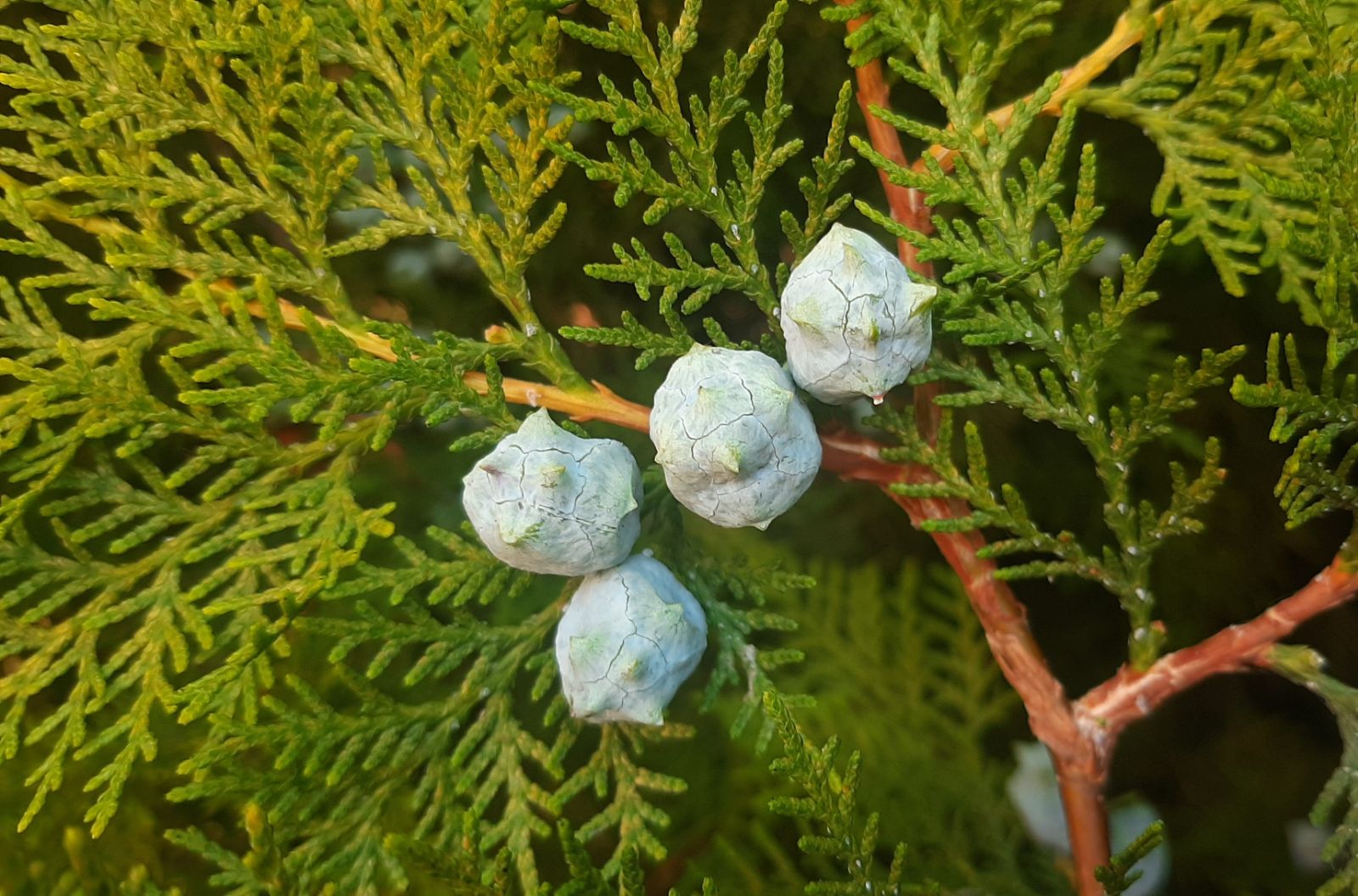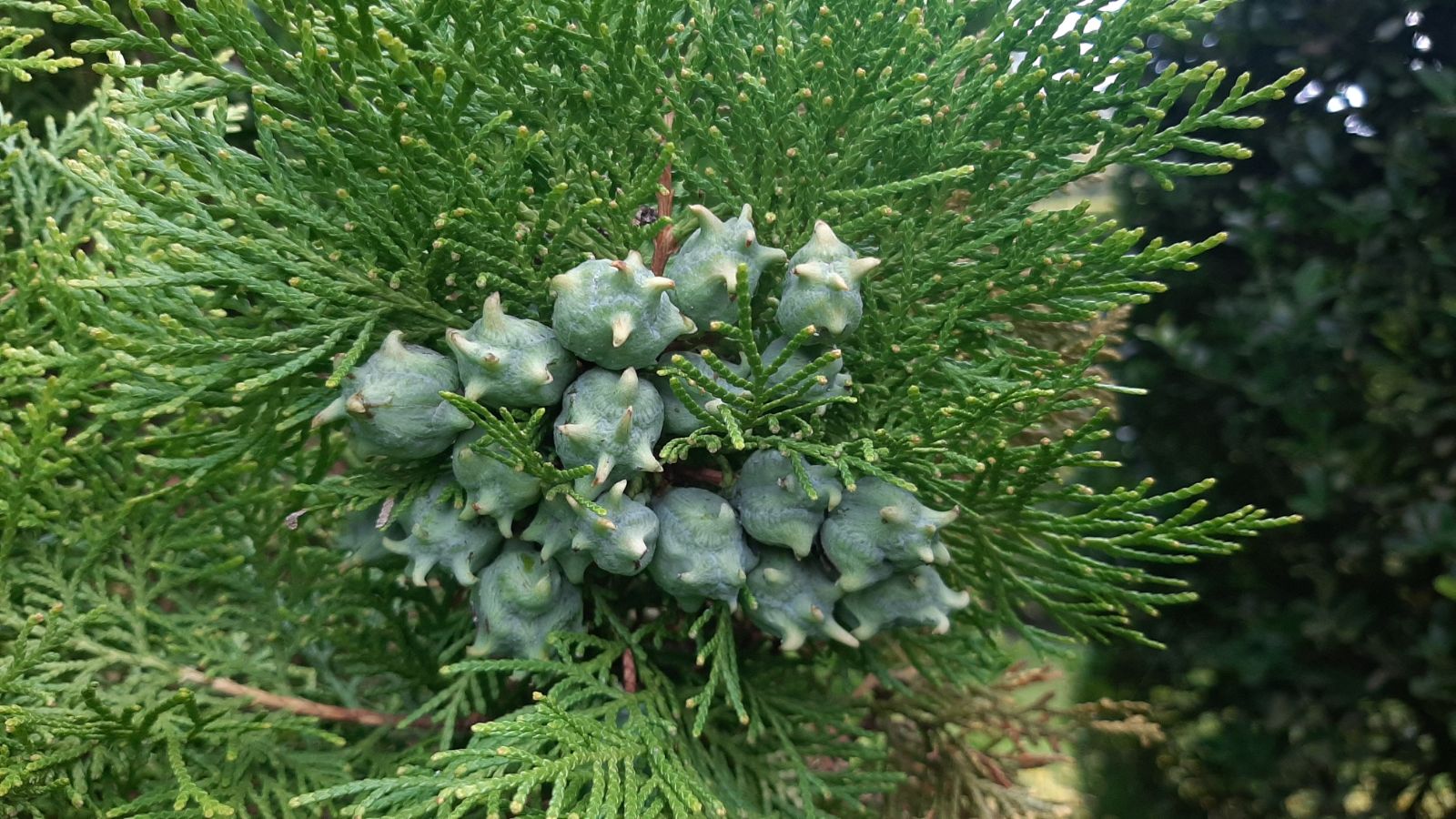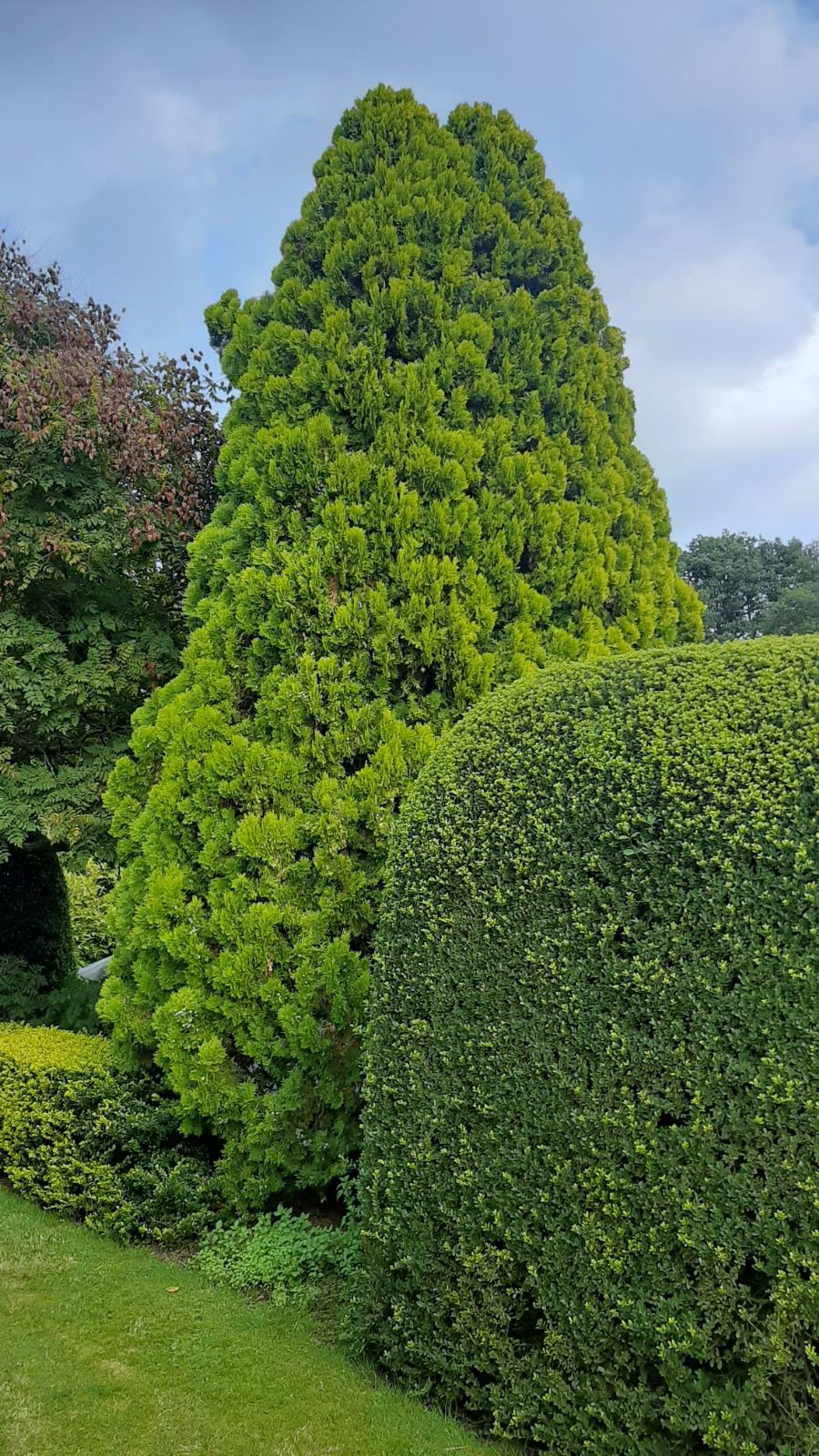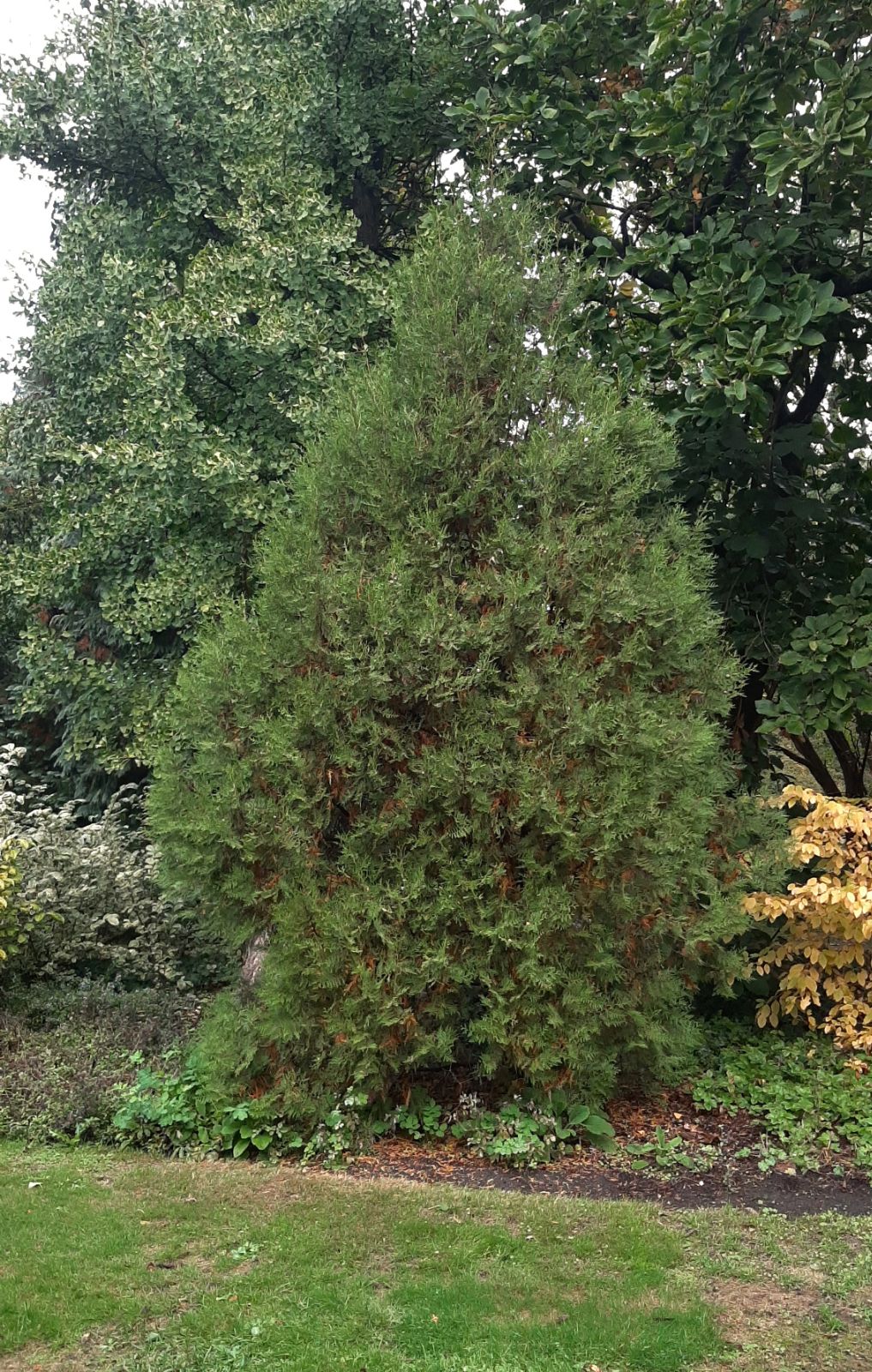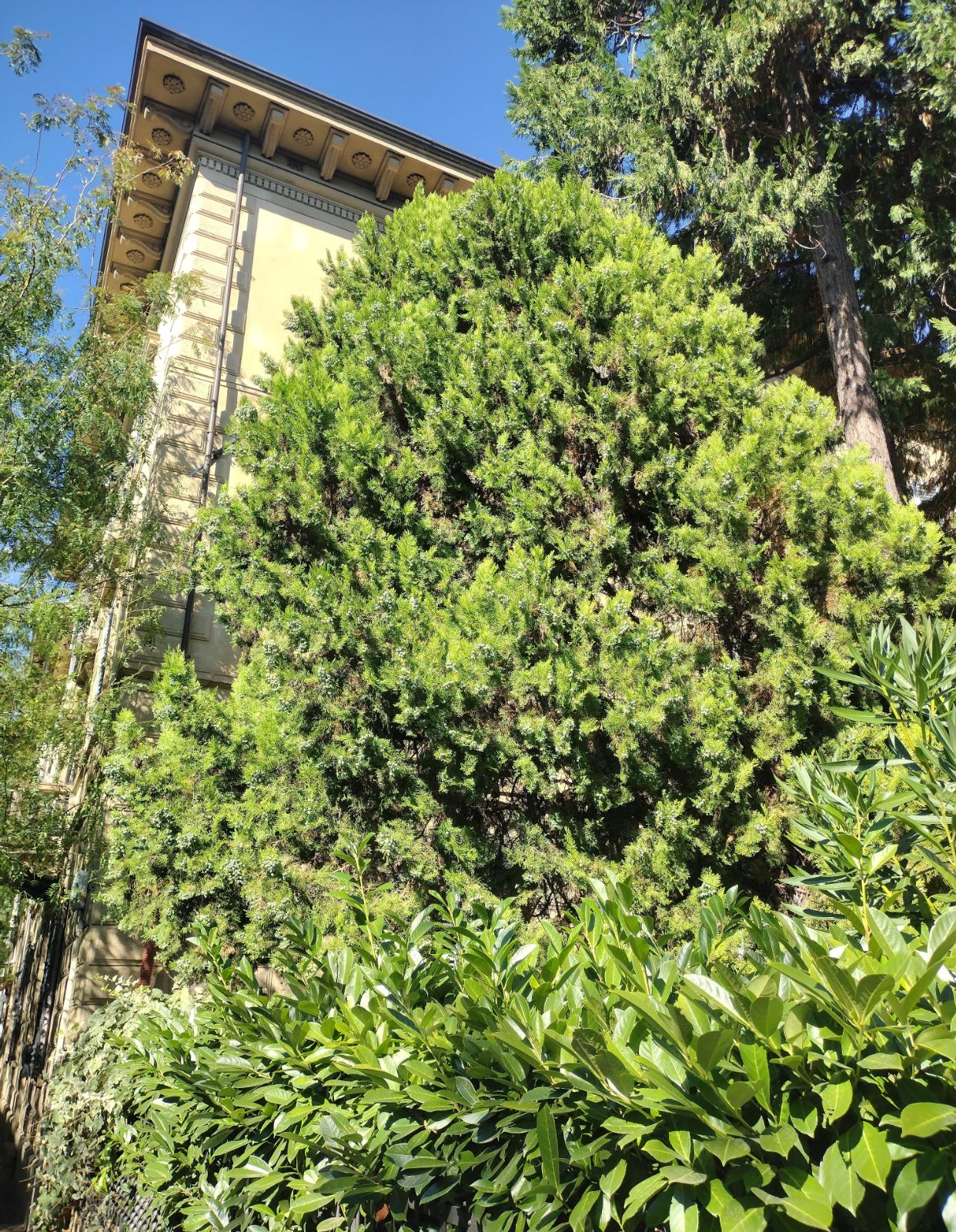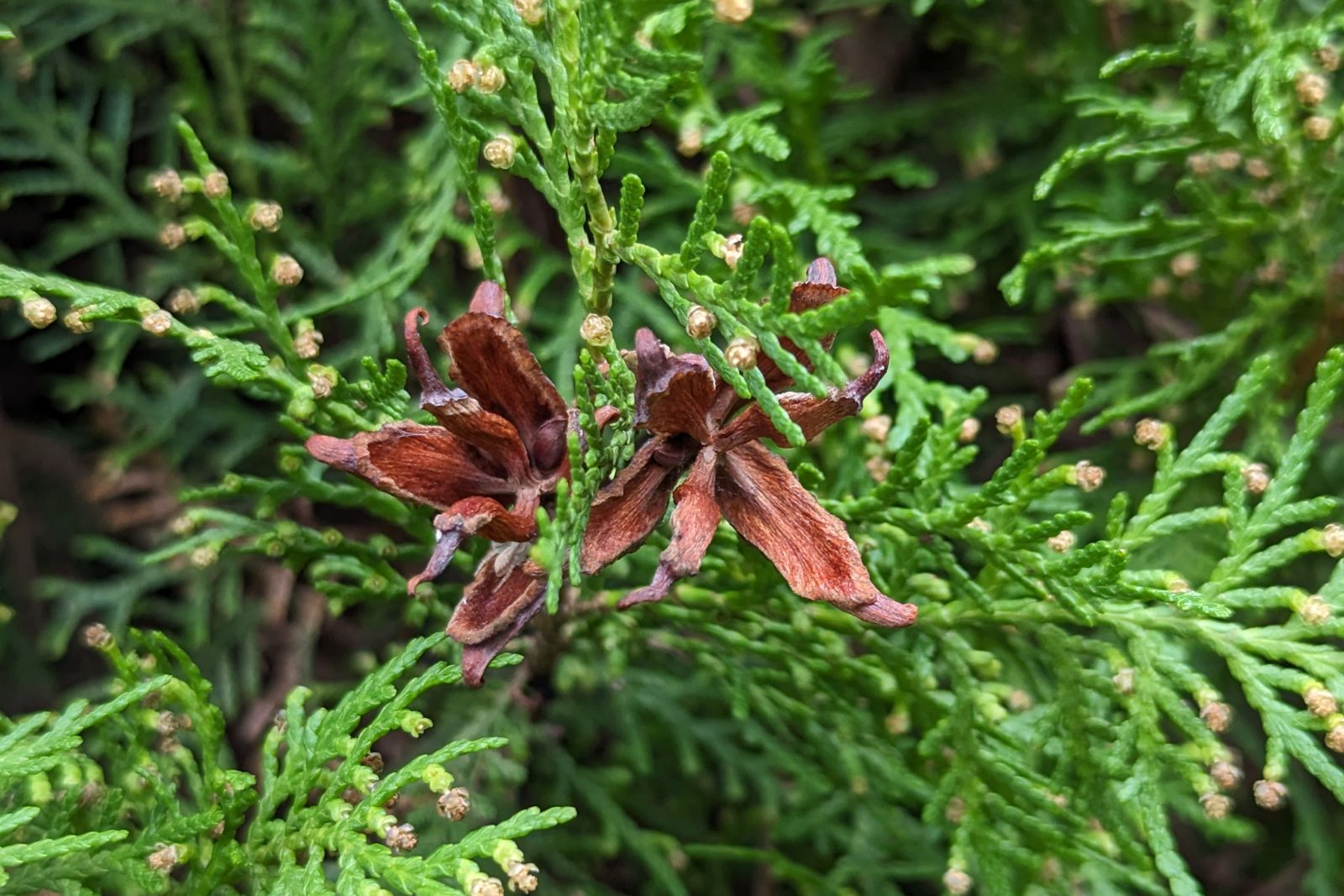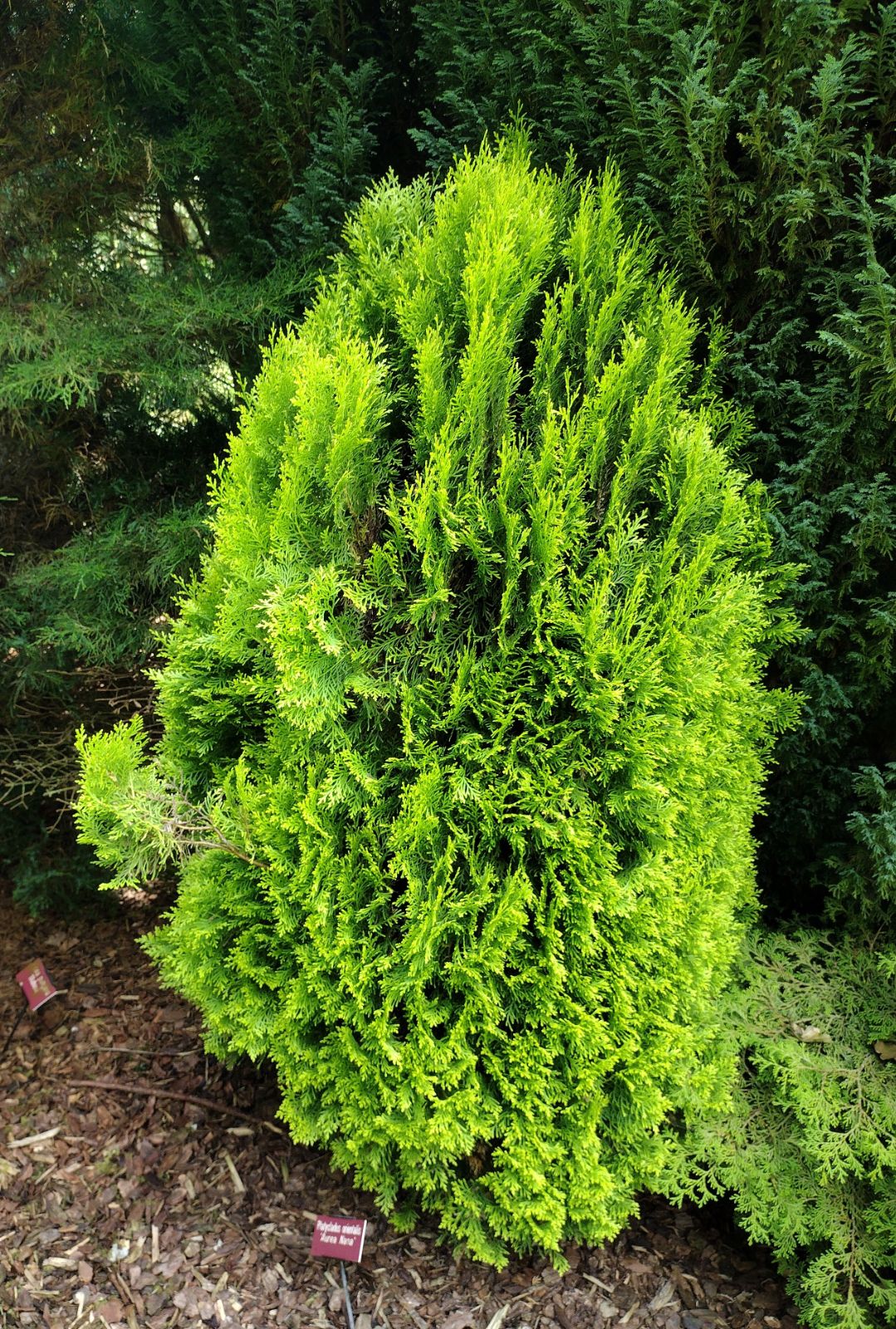Platycladus orientalis
Credits
Article from Bean's Trees and Shrubs Hardy in the British Isles
Recommended citation
'Platycladus orientalis' from the website Trees and Shrubs Online (treesandshrubsonline.
Genus
Common Names
- Chinese Arborvitae
- Oriental Arborvitae
- Cheuk-baek-na-mu
- 侧柏 (ce bai)
Synonyms
- Biota orientalis (L.) Endl., nom. illegit
- Platycladus stricta Spach
- Thuja orientalis L.
Infraspecifics
Other taxa in genus
Editorial Note
Bean discussed this taxon under its old name Thuja orientalis L., but it has long been considered distinct from the thujas. We have copied Bean’s text here in full under the correct name and will update the article when funds are available. If you would like to sponsor this genus please contact us.
TC, July 2022.
A shrub or small tree, 30 to 40 ft high, very distinct among the thuyas and cypresses by reason of the more or less erect or upward-curving branches bearing the spray or branchlets in the vertical plane, and in being of the same colour on both sides. There are two distinct types in cultivation; the one tall, somewhat columnar, and comparatively thin-branched, sometimes called var. pyramidalis; the other a dense, rounded or broadly pyramidal shrub with numerous branches springing from near the ground. The latter is the more effective for gardens. Ultimate subdivisions of the branchlets 1⁄16 in. wide, flattened; green on both sides. Lateral leaves with their edges overlapping the middle ones, about 1⁄12 in. long, scale-like; middle ones grooved; all marked with numerous white stomata. Cones roundish egg-shaped, 3⁄4 in. long, erect, purplish; scales six, rarely eight, thick and woody, with a hooked, horn-like boss near the apex. Seeds wingless.
Native of China, where it has long been cultivated on graves and in temple gardens; not indigenous in Japan, though widely grown there. As a truly wild tree it seems to be rare and its natural distribution uncertain. Fortune saw trees in the mountains west of Peking that he took to be wild, and there seems to be no doubt about the wild status of the stands in N.W. Yunnan, first recorded by Forrest and later by Handel-Mazzetti and Joseph Rock. It grows, for example, in some of the side valleys of the Salween-Mekong divide, on steep dry slopes or even on vertical cliff-faces. Rock also saw it in a remote part of W. Szechwan not visited by Wilson. A point of great phytogeographical interest is that T. orientalis may be genuinely wild in N.E. Iran (Fl. Iran., Cupressaceae (1968), p. 3).
T. orientalis was in cultivation in Holland early in the 18th century. Later the French missionaries sent seeds from Peking to Paris, whence it was introduced by Philip Miller to the Chelsea Physic Garden around 1740. It was reintroduced by Fortune in 1861, and no doubt there were other acquisitions of seed from China earlier in the century.
T. orientalis is now rare in this country in its normal arborescent form, and does not really thrive in our cool climate. Alan Mitchell has found that it is commoner in towns and cities than it is in large gardens and collections, and is healthier there (Conif. Brit. Isles (1972), pp. 290–1). The conditions under which it grows in S.W. China suggest that a rubbly, well-drained soil suits it best. A self-sown plant grows at Kew in the boundary wall of the garden of the Wood Museum and is probably the very one mentioned by Elwes and Henry in 1906. If so, it has survived there for seventy years. The largest examples of T. orientalis in Britain are 35–50 ft high and up to 61⁄2 ft in girth.
Although T. orientalis agrees with other species of the genus in having only two seeds to each scale (three to five in Thujopsis), it differs from them in the thicker cone-scales and wingless seeds. If removed from Thuja it would become the sole member of the genus Platycladus, taking the name P. orientalis (L.) Franco. The name Biota orientalis, once widely used for it, is illegitimate.
From the Supplement (Vol. V)
specimens: Culverwood, Herts., 46 × 5 + 33⁄4 ft (1985); East Mailing Church, Kent, 50 × 51⁄2 ft, a fine tree (1984); Blenheim Palace, Oxon., Azalea Garden, 46 × 41⁄2 ft (1978); The Royal Oak, Bettws-y-coed, Gwyn., 52 × 43⁄4 ft at 1 ft (1984).
'Aurea Nana'
A dwarf roundish to ovoid bush; foliage golden yellow when young, light green later; branchlets arranged in definite vertical planes. One of the most frequently planted of dwarf conifers. Several variants of this character have been raised and the origin of the present stock is uncertain. It is unlikely to be the ‘T. aurea’ raised by Messrs Waterer of Knap Hill, since they had plants up to 5 ft high and 15 ft in circumference in 1859.
'Conspicua'
Of narrower, more conical habit than ‘Aurea Nana’ and less regularly arranged sprays. The colouring is similar but more persistent. Raised in the USA towards the end of the last century.'Elegantissima'
Of conical habit, to about 20 ft high. Foliage greenish yellow, browning in winter. Rollison’s nursery, 1858.f. flagelliformis (Jacques) Rehd.
Synonyms
T. orientalis flagelliformis Jacques
T. pendula D. Don in Lamb.
T. filiformis Lodd. ex Lindl.
T. orientalis var. pendula (D. Don) Mast

